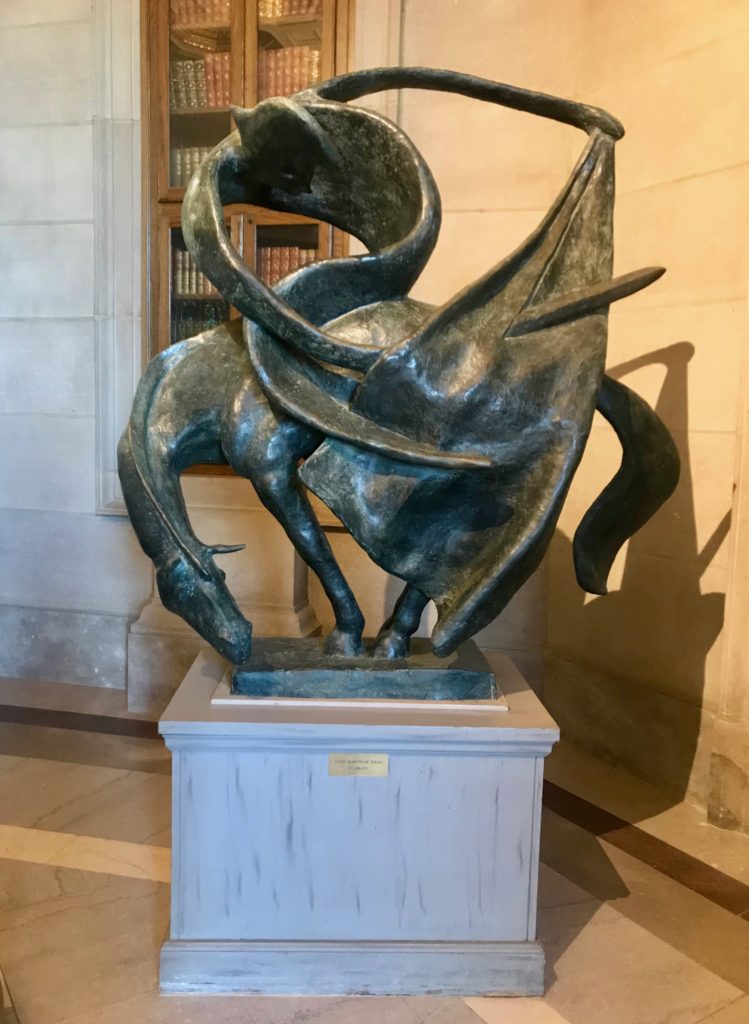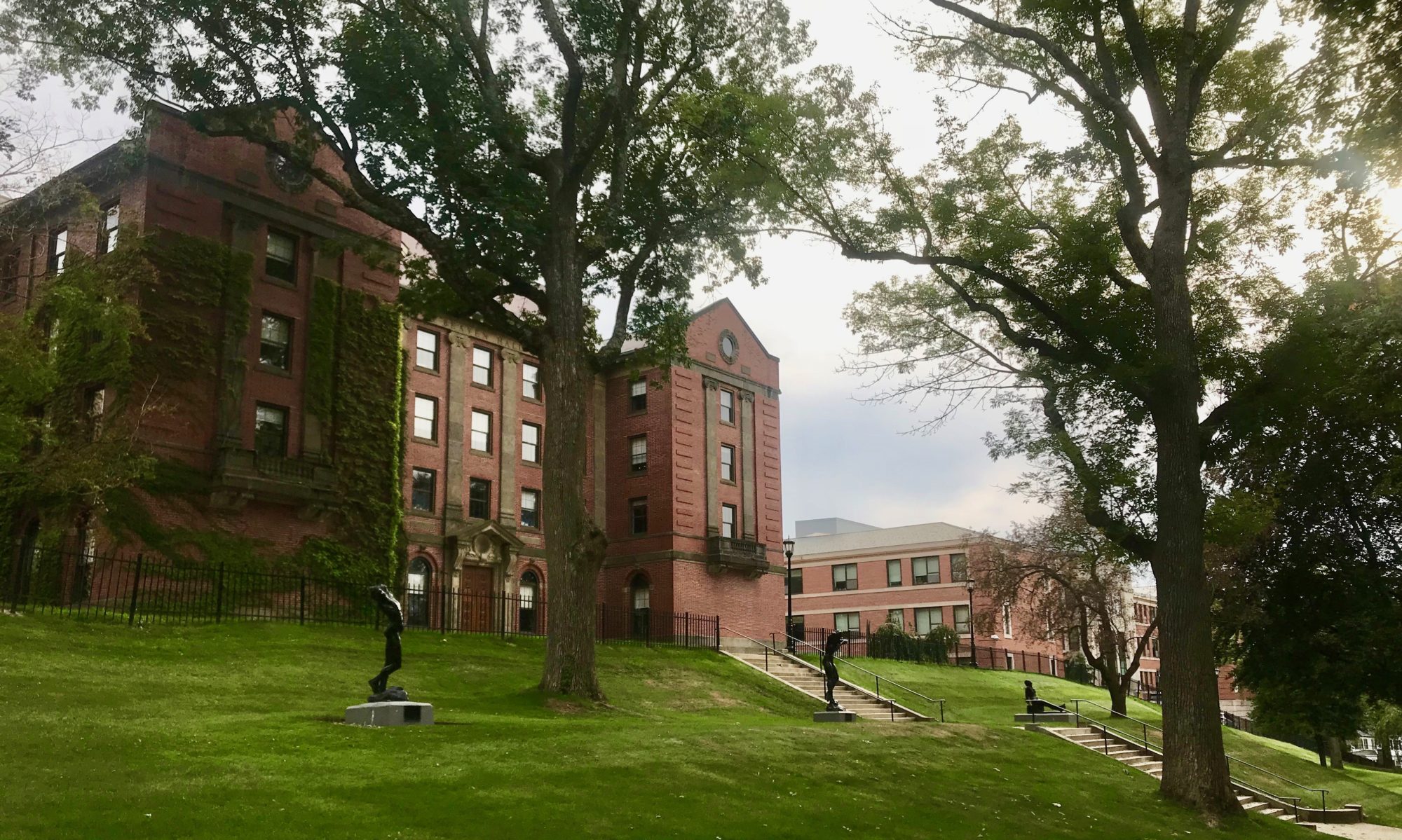This week’s blog comes from Ellen Perry, Professor of Classics at Holy Cross:
If you’ve ever headed up the long flight of steps to the front door of Dinand Library and into the foyer, you know the dramatic bronze sculpture of a man on horseback slicing his sword through a cloak in a single, swooping curve. The man is semi-abstract; the horse on which he sits decidedly less so. The man’s legs and torso describe a slender reverse S-curve, while his arms reach behind him in a broad, framing C-curve: his left hand holds one end of the cloak aloft; with his right, he pulls the sword down through the extended sweep of the cloak.

This is Frederick Shrady’s Martin of Tours, the 4th-century saint who, in spite of his epithet, was born in Pannonia (modern Hungary) and grew up in Ticinum (modern Italy). Martin followed his father into the Roman army and served there for more than two decades before he retired and helped his friend Hilary build a monastery near Poitiers. He later became Bishop of Tours.
Sulpicius Severus, the author of Martin’s Vita (life story), was a somewhat younger contemporary of Martin’s who knew him personally and was devoted to his memory. Here’s how the Vita describes the event commemorated by the Dinand sculpture:
…. when he possessed nothing more than his weapons and a single military uniform, in the middle of a winter that had raged more cruelly than usual, with the result that the power of the cold had extinguished many lives, he met a naked beggar at the gate of the city of Amiens. This man begged those who were passing by to pity him, but everyone was passing by his misery in silence. Martin, full of God, understood that the beggar had been reserved for him, as the others were not extending mercy. What could he do? He had nothing more than the military cape that he was wearing, for everything else had been used up in similar works. And so, taking the sword that he wore, he divided his cloak in half and gave part of it to the beggar. He put the other half back on. (trans. Richard J. Goodrich)
The Vita goes on to say that, the following night, Martin dreamed that he saw Christ wearing the part of the cloak that had been given to the beggar. In his dream, Christ spoke to the angels, saying, “Martin, while still a catechumen, clothed me with this garment.” Sulpicius Severus explicitly connects this episode with Matthew 25:40: “Whatever you have done for one of the least of these, you have done for me.”
Martin’s Vita doesn’t mention a horse at all. In fact, Shrady’s horse stands in some contradiction to the extreme poverty detailed by the Vita. The horse makes up for that handsomely, though, by raising Martin above ground level and introducing a bold dynamism to his division of the cloak.
Shrady’s Martin of Tours was commissioned by the College of the Holy Cross. The funds came from a 1967 bequest by Mary Cordon, whose brother, Callahan Cordon, graduated from Holy Cross in 1911 and later became a priest. The same year as Holy Cross received that bequest, 1967, novelist and historian Paul Horgan wrote of Shrady’s style:
His own best ideas seem to occur to him . . . in heroic scale and dramatic forms. Like his father, he is a master craftsman who can make his fixed materials serve the release of emotional gestures larger than life . . .
Keep an eye out for next week’s blog post about Frederick Shrady to learn more about his connection to the Monuments Men, the soldiers who protected the cultural heritage of Europe during World War II!
